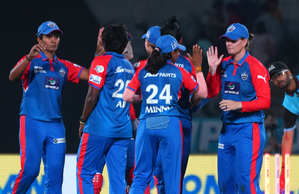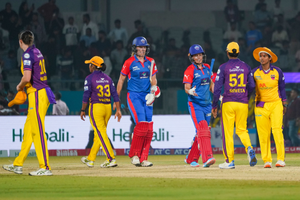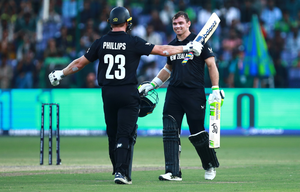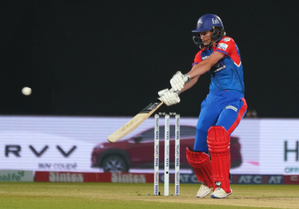Champions Trophy: England eye maiden title to bury past heartbreaks (SWOT Analysis)
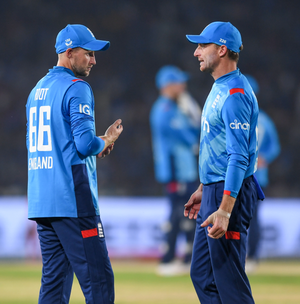
New Delhi, Feb 17 (IANS) England’s quest for their maiden ICC Men’s Champions Trophy title carries the weight of past performances and high expectations across the years. Having conquered both the ICC Men’s Cricket World Cup and the ICC Men’s T20 World Cup, the Champions Trophy remains the only white-ball title missing from their cabinet.
Twice before, in 2004 under Michael Vaughan and in 2013 under Alastair Cook, England came agonisingly close, only to falter at the final hurdle against India. Now, as they prepare for the 2025 edition, a full-strength squad, a renewed tactical approach, and the aggressive philosophy of new white-ball head coach Brendon McCullum offer a fresh shot at redemption.
England’s strength lies in their formidable batting unit, one that has defined their white-ball dominance over the past decade. The team has been the fastest-scoring ODI side since the 2023 World Cup, scoring at 6.02 runs per over. The presence of Jos Buttler, Joe Root, Harry Brook, Phil Salt and Ben Duckett ensures that England can take the attack to any opposition.
Root’s adaptability and experience make him a crucial figure, particularly in Pakistani conditions where spin is expected to play a key role. Alongside Buttler’s explosiveness and Brook’s fearless approach, England’s batting line-up is built to dictate terms, balancing aggression with the ability to stabilise when needed.
However, England’s lead-up to the tournament has been far from ideal. They have won only four of the thirteen ODIs played since the 2023 World Cup and have suffered four consecutive series defeats. This slump has raised concerns about their ability to perform under pressure in a major tournament.
The inconsistency stems largely from an unsettled squad, with key players missing various assignments due to injuries, rest periods, and franchise cricket commitments. Jos Buttler, their full-time captain, has featured in just six ODIs since the World Cup, and the lack of continuity has disrupted their rhythm.
Adding to their worries is the lack of depth in the spin department. With Moeen Ali retired, the burden falls solely on Adil Rashid, England’s most successful ODI spinner. Rashid remains a world-class bowler, but at 36, questions remain over whether he can shoulder the responsibility alone across an entire tournament. His form will be crucial, particularly in the middle overs, where England have often struggled to contain scoring rates.
Joe Root and Liam Livingstone are England’s only other viable spin options, but neither offers the same level of control or wicket-taking threat. This deficiency could prove costly on subcontinental pitches that often aid slow bowlers.
The bowling attack, however, carries immense firepower in the pace department. Jofra Archer’s return, alongside the likes of Mark Wood, Gus Atkinson, Brydon Carse and Saqib Mahmood, provides England with a varied and menacing arsenal. Each of these pacers brings a different strength – Archer’s raw pace and accuracy, Wood’s express speed, Atkinson’s skiddy bounce, and Carse’s versatility as a seam-bowling all-rounder.
If these quicks find a rhythm, they can trouble the best batting line-ups. Yet, England’s biggest concern remains their bowling economy. Since the 2023 World Cup, they have conceded 6.41 runs per over on average, the worst among all teams in this period. This vulnerability was evident in their recent ODI series defeats against India (3-0), where opposition batters capitalised on England’s lack of control in the middle overs.
The absence of Ben Stokes and Sam Curran further complicates matters. Stokes, England’s talisman in high-pressure situations, has opted out to focus on his Test career, leaving a void in both leadership and middle-order stability. Curran, on the other hand, has seen his stock fall due to inconsistent performances with the ball, leading to his omission. Their absences mean England lack a left-handed middle-order batter, which could affect their flexibility against match-ups, and a left-arm seamer, limiting the variety in their attack. Jamie Overton and Brydon Carse will have to step up as seam-bowling all-rounders to fill the void left by Stokes and Curran.
Despite these challenges, the Champions Trophy presents England with a golden opportunity to rewrite history. It offers them the chance to overcome their spin vulnerabilities, refine their bowling execution, and embrace McCullum’s aggressive brand of cricket.
The “Bazball” philosophy, which revolutionised England’s Test cricket, is expected to make its way into their white-ball setup, encouraging fearless cricket even in challenging conditions. If executed well, this approach could unsettle opposition teams and give England the edge in close encounters.
England’s campaign for their maiden Champions Trophy title will kick off on February 22, against Australia in Lahore. Then they will face Afghanistan on February 26 at the same venue and in the last league match they will face South Africa in Karachi on March 1.
England squad: Jos Buttler (c), Jofra Archer, Gus Atkinson, Tom Banton, Harry Brook, Brydon Carse, Ben Duckett, Jamie Overton, Jamie Smith, Liam Livingstone, Adil Rashid, Joe Root, Saqib Mahmood, Phil Salt, Mark Wood.
–IANS
hs/ab

